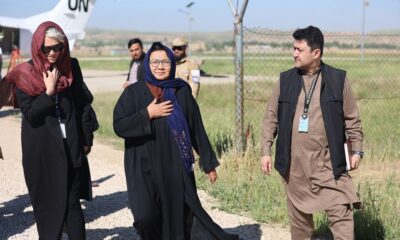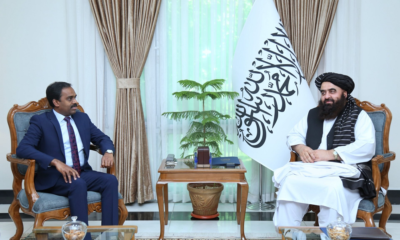Health
Bayat Foundation establishes pediatric oncology unit in Kabul

Bayat Foundation has established a new unit in the Jamhuriat Hospital where children with cancer will be treated. This health center is a state-owned hospital which is located in Kabul city.
According to Bayat Foundation officials, the pediatric oncology ward was built within a month, includes six beds and has modern equipment, including oxygen units, ultrasound machines and monitors for checking vital signs.
“For the first time, about six years ago, Bayat Foundation established another department in the Jamhuriat Hospital for cancer patients, where more than five thousand cancer patients have been treated,” said Dr. Ehsanullah Bayat, the Chairman of Bayat Foundation.
Dr. Bayat also said that another modern hospital for children and mothers in Kabul has been built by the foundation, which will serve the people once equipment has been installed.
“The goal of Bayat Foundation has always been to help our countrymen and these children, who are the future of Afghanistan, who need more help, and you will soon see the opening of another very modern hospital for children and mothers in the area of Wazir Mohammad Akbar Khan,” said Dr. Bayat.
On the other hand, the Ministry of Public Health considers the establishment of a pediatric oncology department in the Jamhuriat Hospital as one of the most important needs in the health sector in the current situation.
“The Public Health Ministry is very happy that it was able to create a special pediatric oncology ward in Afghanistan with the cooperation of benevolent compatriots,” said Mohammad Hassan Ghiasi, deputy minister for public health, adding that the work was done at the initiative and funding of the Bayat Foundation, and is a much-needed facility.
The head of Jamhuriat Hospital, Khan Mohammad Akrami, welcomed the Bayat Foundation’s move and said that now with the establishment of the pediatric oncology department, patients who go into shock or go into a coma during chemotherapy will be hospitalized and cared for.
“Fortunately, with the help of the Bayat Foundation and the initiative of the Ministry of Public Health, we were able to establish an oncology department here,” said Mohammad Akrami.
According to statistics, dozens of children visit this hospital daily for chemotherapy, and a number of these children go into shock while some fall into a coma during treatment.
Bayat Foundation meanwhile also delivered hundreds of boxes of nutritional supplements to malnourished children being treated at the hospital.
Health
Afghanistan’s deputy health minister visits Nimroz border, assesses healthcare for returning refugees
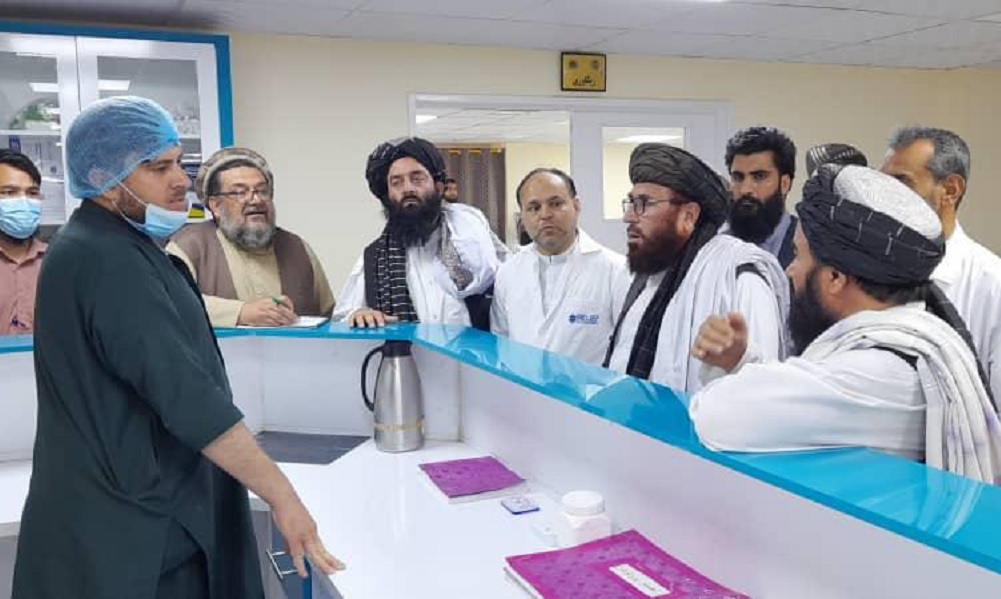
Mawlawi Abdul Wali Haqqani, the Deputy Minister for Health Services of the Ministry of Public Health, has visited the Abrisham Bridge border region in Nimroz province to assess the healthcare situation available to returning refugees from Pakistan.
Haqqani was accompanied by the deputy governor of Nimroz and a technical team.
During the visit, Haqqani and the team assessed the operational efficiency of healthcare facilities in the area.
He made numerous recommendations and directed healthcare officials to uphold the highest standards in terms of treating return refugees.
The technical team meanwhile identified a number of operational challenges, which have been communicated to relevant individuals.
Health
Health services to be expanded urgently for return refugees at Torkham border
Since 1 April at least 44,900 people have returned, with around 58% of them children, according to the UN Refugee Agency (UNHCR).
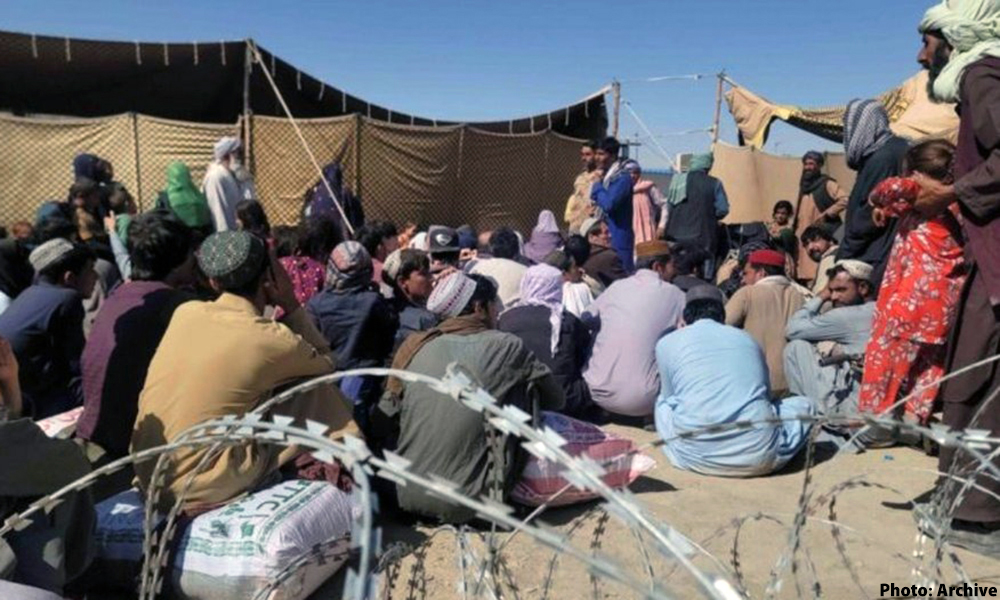
Afghanistan’s health ministry said Tuesday it is expanding health services at Torkham in Nangarhar to cope with the growing number of returning refugees from Pakistan.
According to a statement issued by the ministry, a coordination meeting was recently held to discuss the expansion of health services.
The meeting was chaired by Mawlawi Aminullah Sharif, Director of Public Health in Nangarhar Province, and attended by representatives from various organizations including the World Health Organization (WHO), UNICEF, and other partners.
The meeting focused on improving emergency preparedness and response, enhancing healthcare support for returnees, and addressing current operational challenges, the statement read.
Officials emphasized the urgent need to strengthen health service delivery in response to the growing number of returning citizens.
As a key outcome, participants agreed to increase the number of health facilities and medical staff at the border. This decision aims to ensure timely access to medical care for all returnees and to better manage the health-related pressures caused by the ongoing influx.
Tens of thousands of Afghans are facing dire conditions in makeshift camps after crossing the border from Pakistan, an Islamic Relief assessment team reported on Monday.
“Many are arriving in Afghanistan without any shelter, food, cash or water, and families told us they had to leave all their possessions – including animals and household utensils – behind as they cannot afford to bring them,” Islamic Relief said in the report.
Ramin Sadat from Islamic Relief was part of an assessment team at the Torkham border crossing in eastern Afghanistan. He said this new wave of returning refugees “is unlike anything I’ve seen before. People arrive in droves, covered in dust, crammed onto trucks, and facing a barren border with no basic services in sight. The first thing that greets them is a harsh, windy storm swirling with dust.”
Tens of thousands of families are expected to arrive in the coming days and months, in the wake of the Pakistan government’s announcement that all undocumented individuals and holders of Afghan Citizen Cards (ACC) must leave the country by 31 March 2025 or face deportation.
Since 1 April at least 44,900 people have returned, with around 58% of them children, according to the UN Refugee Agency (UNHCR).
Health
Aid cuts could leave more women dying in pregnancy and birth, UN says
The cuts have had “pandemic-like effects” on health systems globally and could have a “more structural, deep-seated effect”, says WHO director
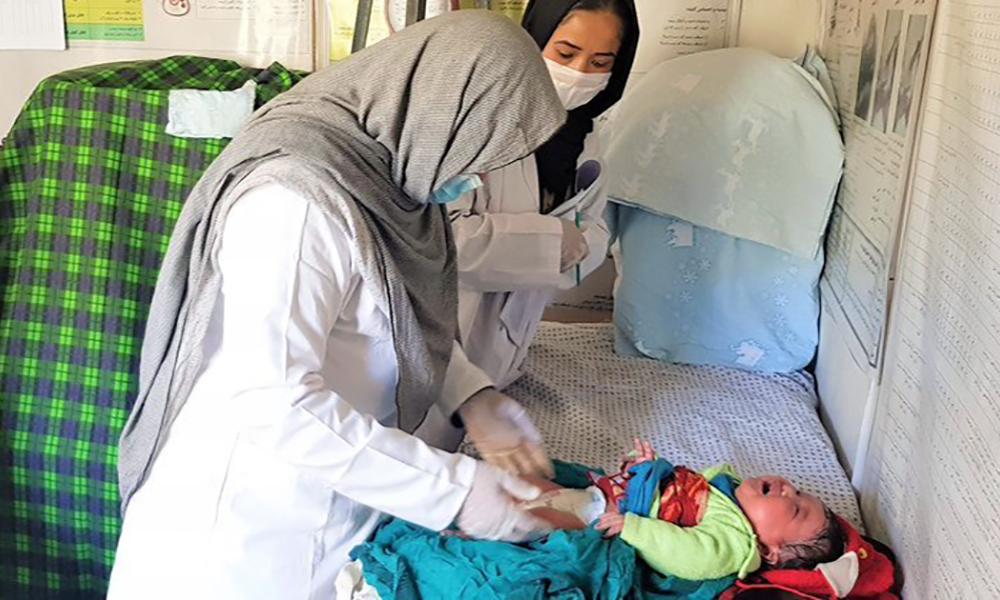
Cuts to aid budgets are threatening to undermine years of progress in reducing the number of women dying during pregnancy and childbirth, and could lead to a rise in deaths, the United Nations has warned.
Globally, there was a 40% decline in maternal deaths between 2000 and 2023, a report by UN agencies including the World Health Organization (WHO) showed on Monday, largely due to better access to essential health services.
That could now go into reverse, the WHO said in a statement accompanying the report which did not mention specific cuts but came in the wake of a foreign aid freeze by the U.S. government and the ending of funding through the United States Agency for International Development (USAID) for many programmes.
Other donor countries including Britain have also announced plans to cut aid budgets.
“One of the headline messages is that the funding cuts risk not only that progress, but we could have a shift backward,” said Dr Bruce Aylward, Assistant Director-General, Universal Health Coverage at the WHO.
The cuts have had “pandemic-like effects” on health systems globally and could have a “more structural, deep-seated effect,” Aylward added.
The WHO said the cuts were already rolling back vital services for maternal, newborn and child health in many countries, reducing staff numbers, closing facilities and disrupting supply chains for supplies including treatments for hemorrhage and pre-eclampsia.
Cuts to other areas, such as malaria and HIV treatment, would also impact maternal survival, the UN said.
Even before the aid cuts led by the United States, things were backsliding in some countries, and progress has slowed globally since 2016, the report said.
In 2023, despite recent progress, a woman still died roughly every two minutes – around 260,000 in total that year – from complications that were mainly preventable and treatable, it added.
The situation was particularly bad in countries affected by conflict or natural disaster, although the U.S. itself is one of only four countries to have seen its maternal mortality rate increase significantly since 2000, alongside Venezuela, the Dominican Republic and Jamaica.
The COVID-19 pandemic also had an impact, the report said: 40,000 more women died due to pregnancy or childbirth in 2021, bringing the total number of deaths that year to 322,000.
“While this report shows glimmers of hope, the data also highlights how dangerous pregnancy still is in much of the world today – despite the fact that solutions exist,” WHO Director-General Tedros Adhanom Ghebreyesus said.
-

 Sport4 days ago
Sport4 days agoSri Lanka A defeats Afghanistan A by 4 wickets in Abu Dhabi
-

 Business5 days ago
Business5 days agoAfghanistan’s growth prospects remain uncertain amid global uncertainty: World Bank report
-

 World5 days ago
World5 days agoUkraine ready to hold talks with Russia once ceasefire in place, Zelenskiy says
-

 Latest News4 days ago
Latest News4 days agoAWCC activates new site in Nangarhar’s Kuz Kunar district
-

 Latest News4 days ago
Latest News4 days agoTarig Ali Bakheet and Japan’s Deputy Foreign Minister discuss Afghanistan’s situation
-

 Climate Change5 days ago
Climate Change5 days agoPowerful earthquake of 6.2 magnitude shakes Istanbul
-

 Business4 days ago
Business4 days agoPakistan’s deputy PM discusses Trans-Afghan Railway Line project with Uzbek FM
-

 Latest News5 days ago
Latest News5 days agoSpecial meeting will be held to launch Afghanistan–Russia joint commission, says Kabulov


